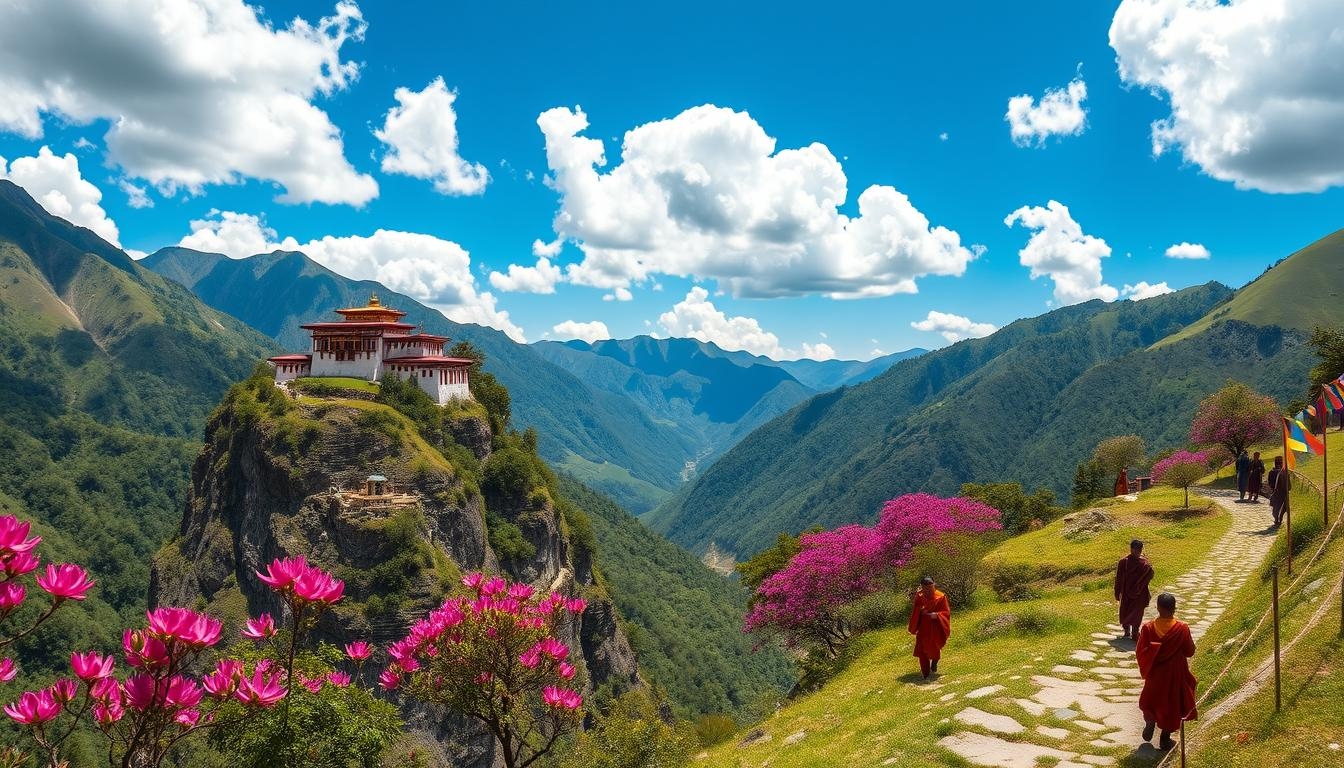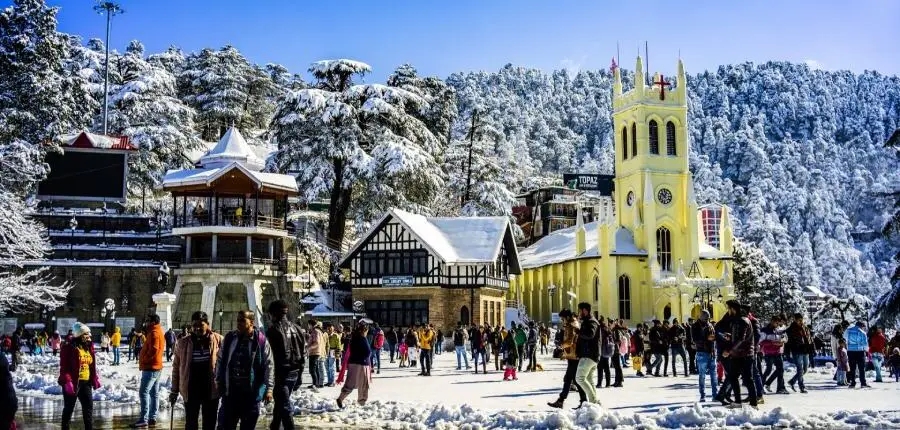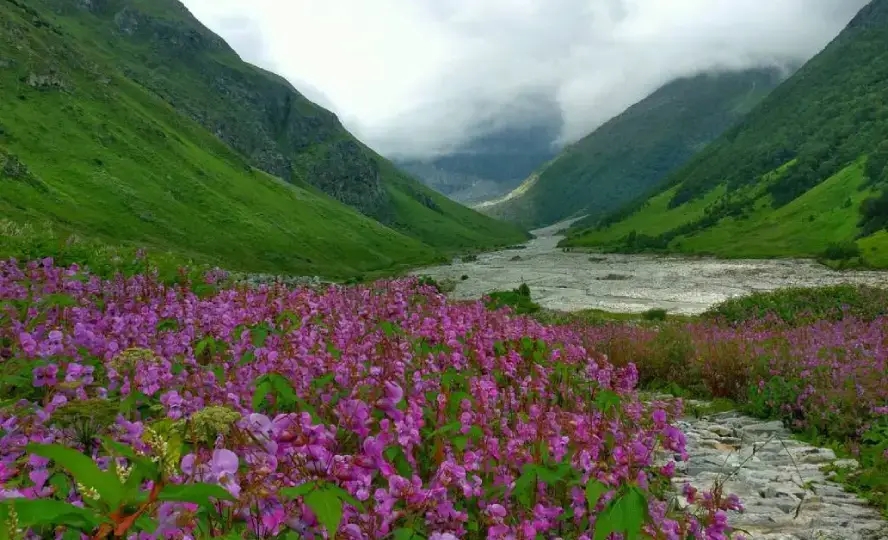Ladakh, located in the northernmost region of India, is known for its stunning landscapes, serene monasteries, and vibrant culture. If you're looking to explore some offbeat destinations in Ladakh, here are a few hidden gems that offer unique experiences away from the usual tourist spots.
1.Turtuk Village
Located close to the Line of Control, Turtuk is a beautiful and remote village known for its unique Balti culture. The village offers stunning views of the Karakoram Range and is famous for its apricot orchards. The village has a small museum that showcases the history, culture, and artifacts of Turtuk and the Balti people. The village retains its traditional Balti houses and structures made of stone and wood. For adventure enthusiasts, it offers opportunities for trekking and exploring the surrounding areas. The village is a starting point for several trekking routes that lead to beautiful viewpoints and hidden valleys. The best time to visit Turtuk is from May to September when the weather is pleasant and the apricot trees are in bloom.
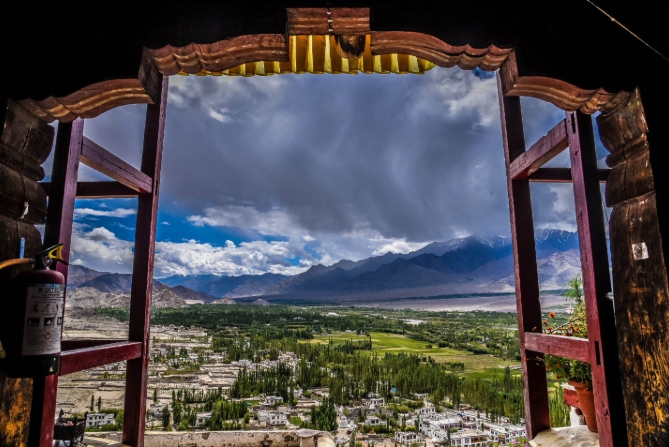
2. Hanle
Home to one of the world's highest observatories, Hanle is a remote village perfect for stargazing. The Hanle Monastery and the Indian Astronomical Observatory are key attractions. It is a small village of nearly 300 people located on the ancient route between Ladakh and Tibet. Hanle is part of the Hanle Wildlife Sanctuary, home to various species including the Tibetan gazelle, wild ass, and the elusive snow leopard. The area is also rich in birdlife, making it a great spot for bird watchers. Due to its remote location, Hanle offers a peaceful retreat away from the hustle and bustle of city life. The village's high-altitude desert landscape, dotted with small water bodies, creates a unique and serene environment. Hanle's combination of spiritual heritage, astronomical significance, and natural beauty makes it a unique and memorable destination in Ladakh.
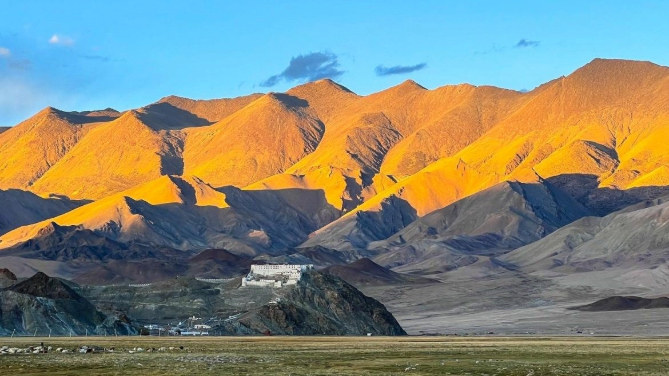
3.Uleytokpo
Located on the banks of the Indus River,Uleytokpo is a serene and picturesque village ideal for camping and nature walks. It serves as a base for visiting the Alchi and Likir monasteries. Many travelers set up camps by the river, enjoying the serene environment and starry nights. It's an ideal place for those seeking a peaceful connection with nature. Visitors can experience traditional Ladakhi hospitality in Uleytokpo. Staying in local guesthouses or homestays allows travelers to immerse themselves in the local culture, cuisine and way of life. The best time to visit Uleytokpo is from May to September when the weather is pleasant, and the landscapes are lush and green. The best time to visit Uleytokpo in Ladakh is during the summer months, from late May to early September. During this period, the weather is relatively mild and pleasant, making it ideal for sightseeing, trekking, and other outdoor activities.
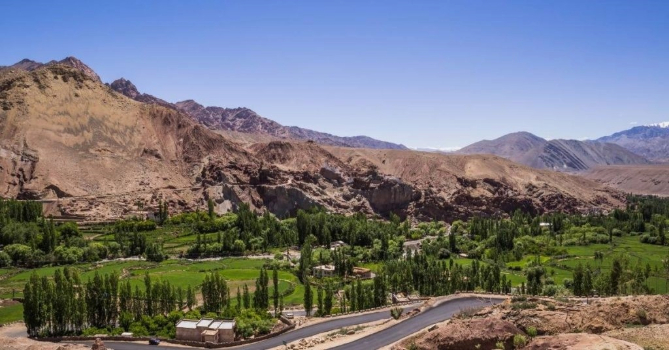
4.Sumur
Located in the Nubra Valley, Sumur is a quaint village known for its lush greenery, serene ambiance, and the Samstanling Monastery. One of the hidden gems in Ladakh for travelers It offers a peaceful retreat away from the more crowded parts of Nubra valley. The region offers various trekking and hiking opportunities, with trails leading to beautiful vantage points and secluded spots. Sumur provides a glimpse into the traditional Ladakhi culture, with its charming mud-brick houses, agricultural practices, and friendly locals. The village is known for its warm hospitality and tranquil atmosphere. Best time to visit Sumer is between June to September when the weather remains pleasant and day time temperature is suitable for outdoor activities.
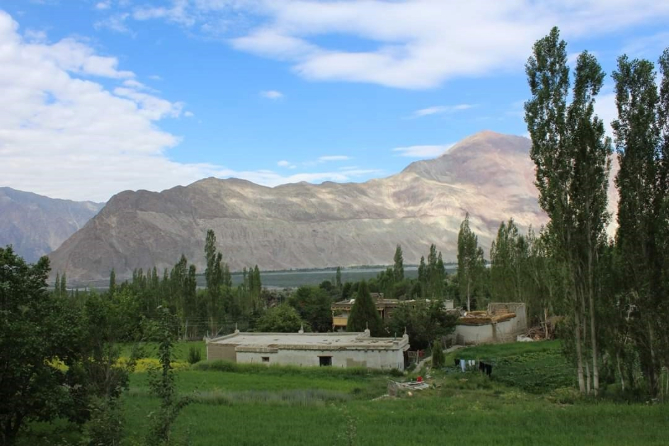
5.Tso Kar Lake
Often overshadowed by its more famous counterparts, Pangong and Tso Moriri, Tso Kar is a high-altitude saltwater lake in ladakh that offers a tranquil and secluded experience. It's a great spot for bird watching and photography. Tso Kar is part of a twin lake system, with the freshwater Startsapuk Tso located nearby. The two lakes are connected by an inlet stream, with Tso Kar being the saltwater lake. The surrounding area is rich in wildlife, including kiang (Tibetan wild ass), Tibetan gazelle, Tibetan wolf, and various species of marmots and hares. The region around Tso Kar offers excellent trekking opportunities, with trails that provide spectacular views of the lake, surrounding mountains, and unique landscapes.
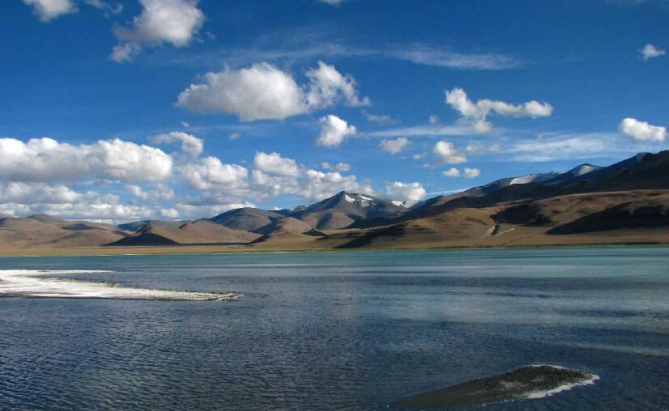
6.Likir Village
Known for the Likir Monastery, which houses a massive statue of Maitreya Buddha, this village offers a peaceful environment and panoramic views of the surrounding landscape. Located about 52 kms west of Leh on the Leh-Srinagar Highway it is surrounded by beautiful mountains and lush greenery during the summer months. The village hosts various cultural and religious festivals, offering visitors an opportunity to experience the vibrant traditions and customs of Ladakh. The best time to visit Likir is during the summer months when the weather is pleasant, and the village is accessible. Likir’s scenic beauty, with its backdrop of mountains and the historic monastery, makes it a great spot for photography.
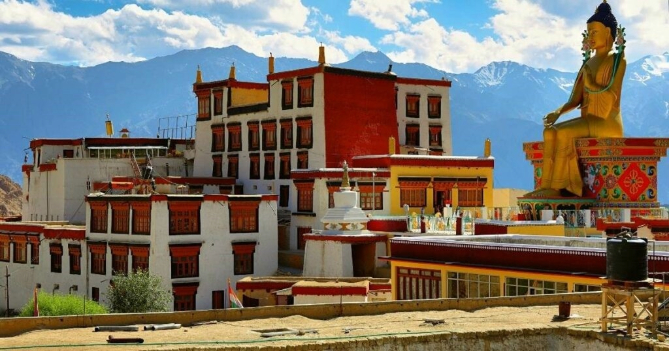
7. Rangdum
A remote and isolated valley located between Kargil and Padum, Rangdum is known for its rugged beauty and the 18th-century Rangdum Monastery. It's an ideal place for those seeking solitude and untouched natural beauty. Situated at an altitude of approximately 4,031 meters (13,225 feet) above sea level it serves as a midway point between Kargil and Padum, the main town in the Zanskar Valley. The Rangdum Monastery is one of the primary attractions in the village. It is perched on a small hilltop overlooking the vast plains of the Suru Valley. It houses a collection of ancient thangkas, manuscripts, and statues, and offers panoramic views of the surrounding mountains and valleys. The region is especially beautiful during the summer months when the meadows are lush and the snow-capped peaks form a stunning backdrop. The area around Rangdum offers excellent trekking opportunities. Popular routes include treks to the Zanskar Valley and other nearby villages and monasteries. The best time to visit Rangdum is during the summer months when the weather is relatively mild, and the roads are accessible.
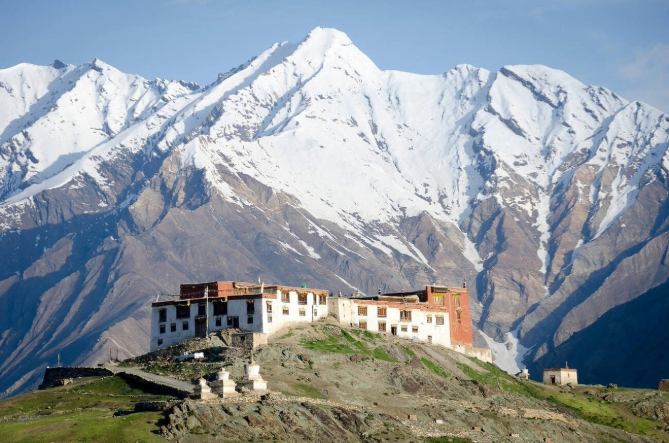
8. Dha-Hanu
These are two Aryan villages located in the lower Ladakh region. Dha-Hanu is known for its unique Aryan culture and distinct traditions. The villagers here claim to be descendants of the original Aryan race. The villages of Dha and Hanu are inhabited by the Drokpa (or Brokpa) community, who are believed to be descendants of the ancient Aryans. This region stands out for its distinct traditions, customs, and way of life. Dha-Hanu is located in a beautiful valley along the Indus River, surrounded by rugged mountains and green fields. The landscape is particularly picturesque during the summer months when the fields are lush and green. The surrounding areas offer opportunities for trekking and hiking, with trails that provide stunning views of the valley and mountains. The best time to visit Dha-Hanu is during the summer months when the weather is pleasant and the villages are accessible. Dha-Hanu can be reached by road from Leh. The drive takes about 5-6 hours and offers scenic views of the Indus Valley and surrounding mountains.
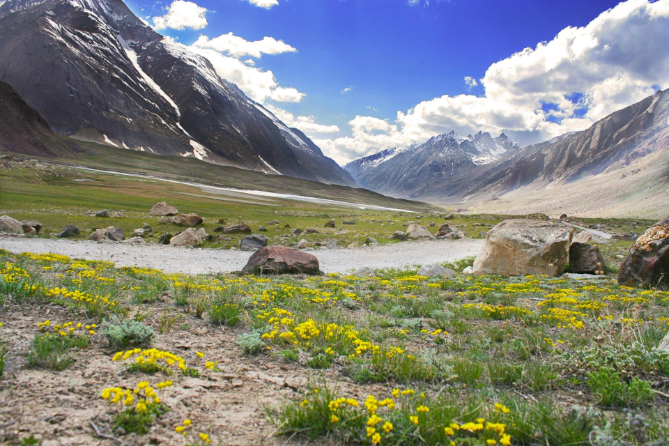
9.Suru Valley
Located in the southeastern part of Kargil district, Suru Valley is a lush, green valley with stunning views of the Nun-Kun peaks. It's a great place for trekking, camping, and experiencing the local culture. The valley is surrounded by the majestic snow-capped peaks of the Greater Himalayas, including Nun Kun, which is the highest peak in the region. The lush green fields, alpine meadows, and clear blue skies make Suru Valley a visual delight, especially during the summer months. The valley offers numerous spots for camping amidst nature, with opportunities to enjoy the serene environment and starry nights. The best time to visit Suru Valley is during the summer months when the weather is pleasant. Suru Valley can be accessed by road from Kargil. The journey offers spectacular views of the mountains, rivers, and villages.
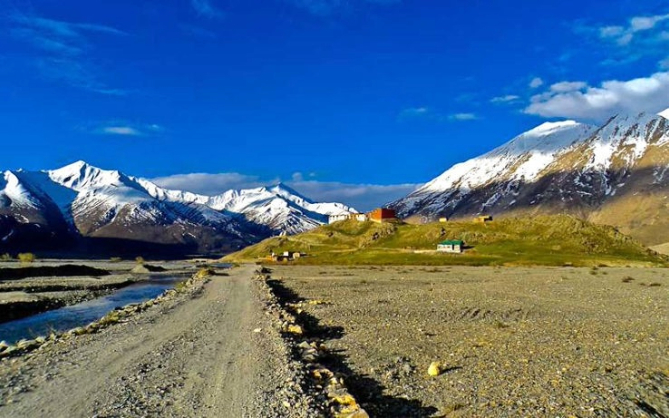
10.Zongkhul Monastery
Perched on a cliff side in the Zanskar region, Zongkhul Monastery is known for its caves, where the great Buddhist saint Naropa is said to have meditated. The monastery offers a spiritual and tranquil experience. It is approximately 20 kilometers southeast of Padum, the main town in the Zanskar Valley. It is a part of the Drukpa Kagyu school of Tibetan Buddhism and holds great historical and religious importance. The monastery houses beautiful frescoes and murals depicting scenes from Buddhist mythology and the life of Naropa. The annual festival, known as the Zongkhul Hemis Tsechu, features traditional mask dances and religious ceremonies. The monastery offers stunning views of the surrounding mountains and the Stod Valley. The tranquil environment and the picturesque setting make it an ideal place for meditation and reflection. The monastery is accessible by road from Padum, the main town in Zanskar. The journey involves a drive through rugged terrain and scenic landscapes.
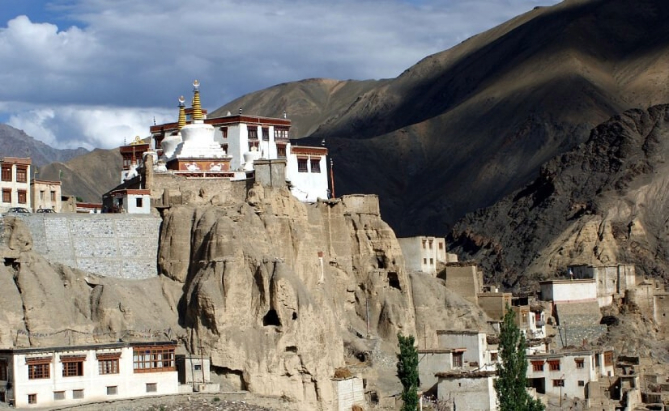
These offbeat destinations in Ladakh offer a mix of adventure, culture, and natural beauty, providing an authentic and less commercialized experience of this majestic region.


